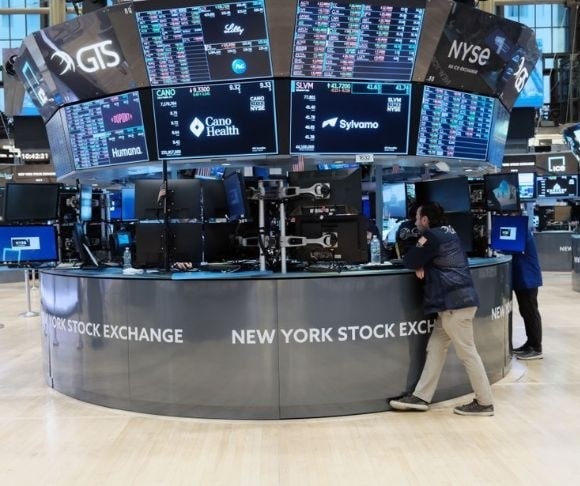The US labor market has stumped the experts. Here is a summary of the 2022 jobs arena: 4.6 million new jobs, 4.6% average hourly wage growth, 10.4 million employment postings, and close to 4.2 million job quits. Overall, it was a robust component of an economy on the decline. Everyone is now looking ahead to 2023 and, much like last year, economists and market analysts anticipate rising unemployment, a hiring slowdown, and weaker employee earnings. Now that 2022 is in the rear-view mirror and all the data have been released, it would be an opportune time to perform an autopsy.
2022 Labor Market
 By last summer, the US economy finally returned all the jobs lost from the coronavirus pandemic. But, according to EJ Antoni, a research fellow for Regional Economics in the Center for Data Analysis at The Heritage Foundation, this is only part of the story.
By last summer, the US economy finally returned all the jobs lost from the coronavirus pandemic. But, according to EJ Antoni, a research fellow for Regional Economics in the Center for Data Analysis at The Heritage Foundation, this is only part of the story.
“As we reopened, people went back to work. Unfortunately, they’re not going back to work in the numbers that they were before the pandemic,” Antoni told Liberty Nation. “So, while the total number of jobs may have finally reached where it was in February of 2020, for example, before those shutdowns, if you look at the rate of the population that’s actually participating in the labor market, if you look at the percentage of the population that’s actually employed, we still are nowhere near pre-pandemic rates.”
Moreover, the conservative think-tank recently estimated that total employment is still down roughly 2.8 million from pre-pandemic levels. This has to do with the population-to-employment ratio, resulting in “a significantly smaller portion of the population of the labor force actually either looking for work or working,” Antoni explained.
“And so, if we look at not today’s rates, but pre-pandemic rates, and apply those to today’s figures, we find that there’s a very large employment gap, and that’s where you get that almost 3 million figure of people who are essentially missing from the labor force,” he added.

(Photo by Spencer Platt/Getty Images)
Citing labor economist Casey Mulligan’s research on the subject, Antoni mentioned that approximately 500,000 workers are presently out of the workforce because of drug and alcohol addiction problems “that all stemmed from the lockdowns during the pandemic.”
In recent months, researchers and economists have warned that the US labor market may be weaker than what the Bureau of Labor Statistics’ (BLS) headline figures suggest. An illustration of this is the divergence between the establishment (business) and household surveys. In December, the former reported 223,000 new jobs, and the latter recorded 136,000 positions. The reason for this gap is that the establishment section allows for overcounting, and the household does not. Overall, in 2022, there was a considerable bridge of around 2.9 million jobs, with the establishment trending flat since March.
Plus, as Liberty Nation recently found, full-time employment growth has been flat, and part-time job growth has been surging.
Many private-sector economists have touched upon the chasm. But even the Federal Reserve Bank of Philadelphia noticed the discrepancy, writing in a recent report that only 10,500 net new jobs were added between March and June. This is vastly different from the estimated net growth of nearly 1.1 million positions in that span.
Antoni also alluded to a concerning development in the monthly labor data. In recent months, there has been a notable decline in the response rate among businesses, which could open pandora’s box and result in many other questions.
“The establishment survey surveys, a very, very large sample of businesses, and so the strength of that survey is precisely its size. Now, we have to call that into question today, though, because the response rate to that survey has dropped dramatically… So when you have, for example, two out of three businesses not responding to the initial survey request, you have to start to wonder, is there some kind of correlation between the decision to respond and whether or not you’re hiring employees and if so, that introduces a tremendous amount of bias into the data and that again could help explain this unprecedented divergence between the two surveys.”
This has garnered the attention of Republican officials and other right-leaning media networks, so it should be interesting to see if the US government will alter its labor data calculations moving forward.
What Does 2023 Look Like?
The consensus is that the 2023 labor market will considerably weaken as the Federal Reserve’s higher interest rates travel through the economy and financial system. Moody’s economist Mark Zandi says there will be zero job growth by the spring or summer, the Eccles Building’s Survey of Economic Projections shows a 4.5% jobless rate, and Fitch Ratings expects “significant job loss” in the upcoming year. In the end, Antoni believes it will all depend on what the Fed will do in the coming months: raise rates, hold them steady, or reverse course. Whatever the case may be, recent analyses of labor data might suggest it will be critical to dive deeper into the numbers rather than depending on headline prints this year.









